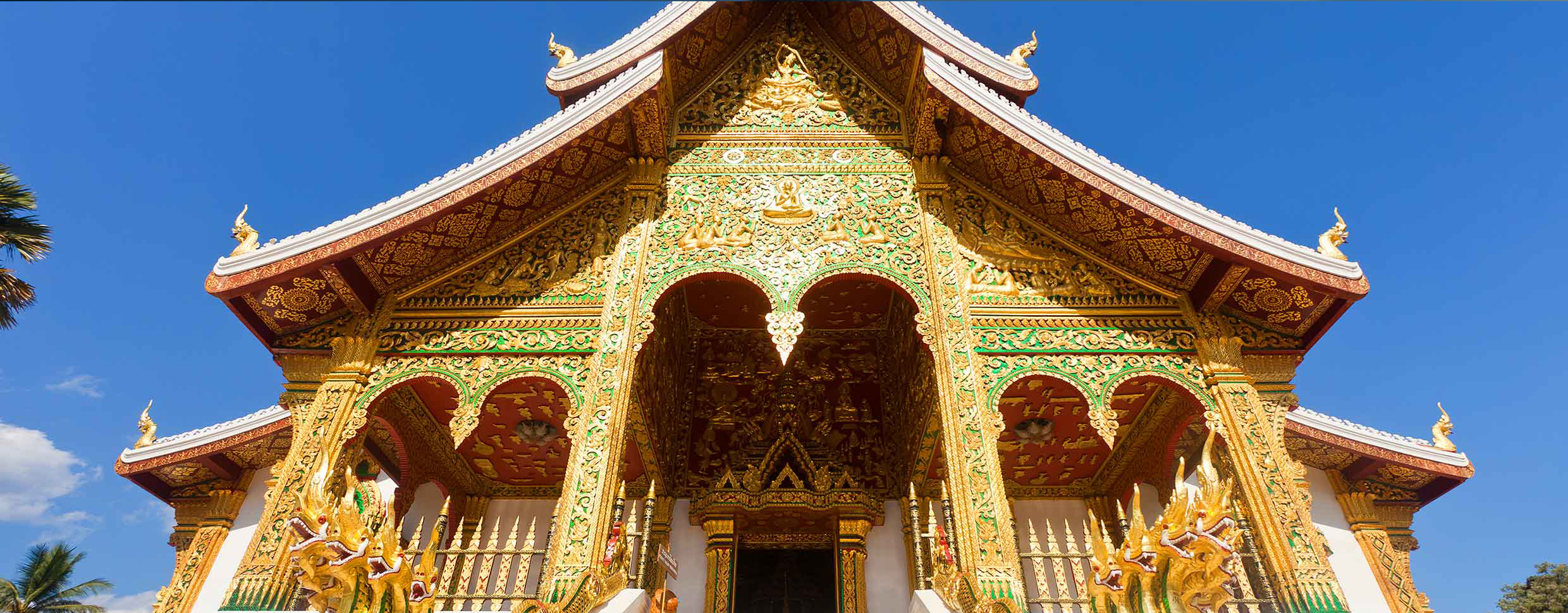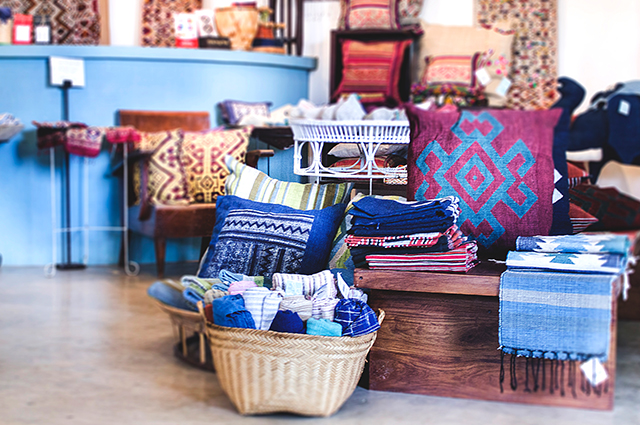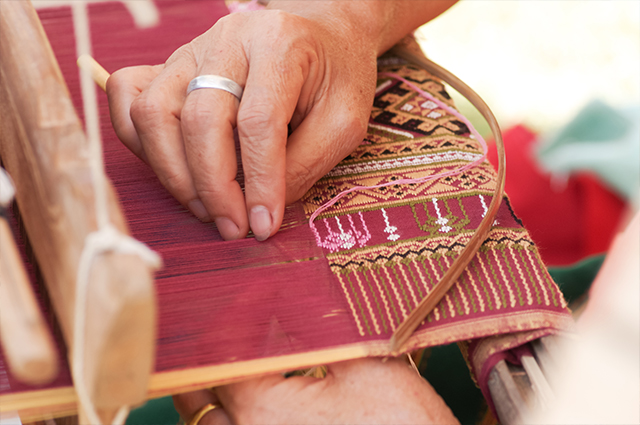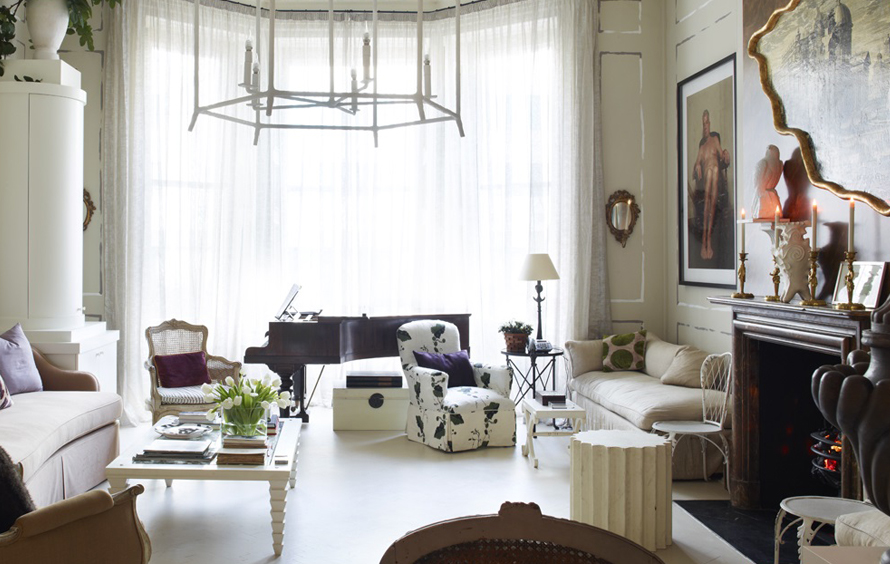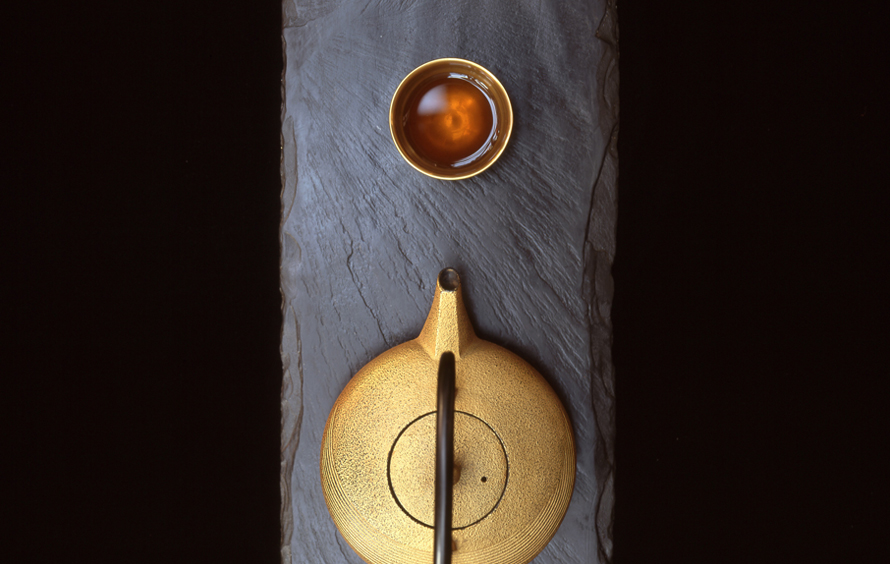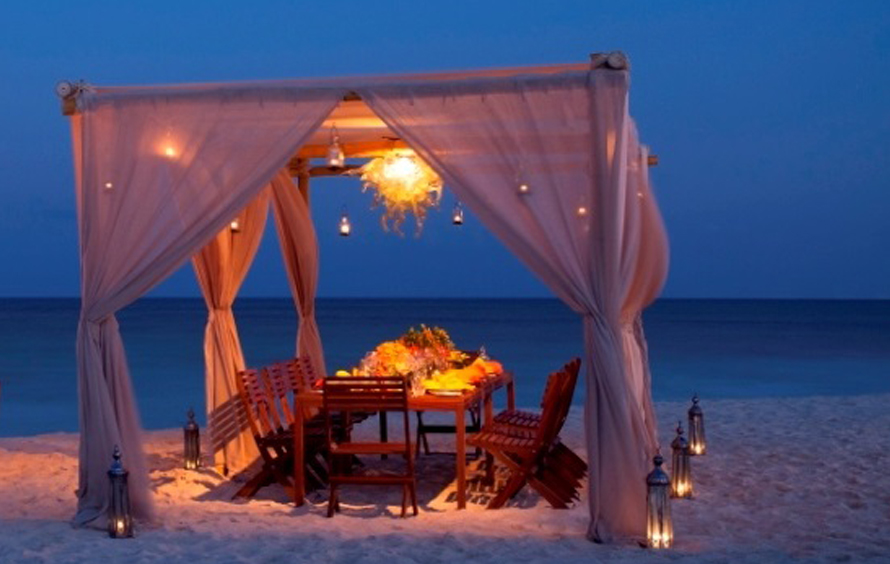Luang Prabang Ambiance
Where mellow Buddhist rituals blend with French Indochine influences
Luang Prabang, the Golden City and former third kingdom of Laos, is an immutable town where nature, history
and culture meet in harmony. Nestled in a cloud-shrouded valley between the winding folds of the Mekong and
Nam Khan rivers, and dense with rich, green foliage, golden temples and beautifully preserved French
colonial villas, Luang Prabang is akin to a breath from a bygone era. Today, the UNESCO heritage-listed town
preserves its Buddhist spiritualism, ethnic diversity and colonial past in one charming, ageless melting
pot.
Luang Prabang kamma
Wandering through yet another immaculately kept temple in Luang Prabang town, the air heavy with the scent
of a thousand frangipani trees, it’s easy to lose yourself in the soothing spiritualism that is embodied in
this ancient town. Bo peng yang (no problem) is the mantra of Laos, a modern-day interpretation of the
Theravada
Buddhist belief of kamma: do good and live peacefully, for you reap what you sow, in this life and the next.
It’s taken quite literally in Luang Prabang where traffic is scarce, cafés spill onto pavements and a smile
and a sabaidee (hello) are always returned.
Luang Prabang has an impressive 32 temples, many of which are home to Laos’ iconic saffron-robed monks who
come from around the country to study, pray and meditate. All Lao boys of adolescent age spend at least
three months as novice monks in a temple; some stay for years. They forsake money and possessions and eat
only in the morning, relying on alms-givers; a practice which accumulates kamma for
all
involved. Orange-clothed monks with their shaved heads, sun umbrellas and simple black rubber slippers are a
familiar yet unforgettable sight in this spiritual town.

A gold naga at Wat Xieng Thong.
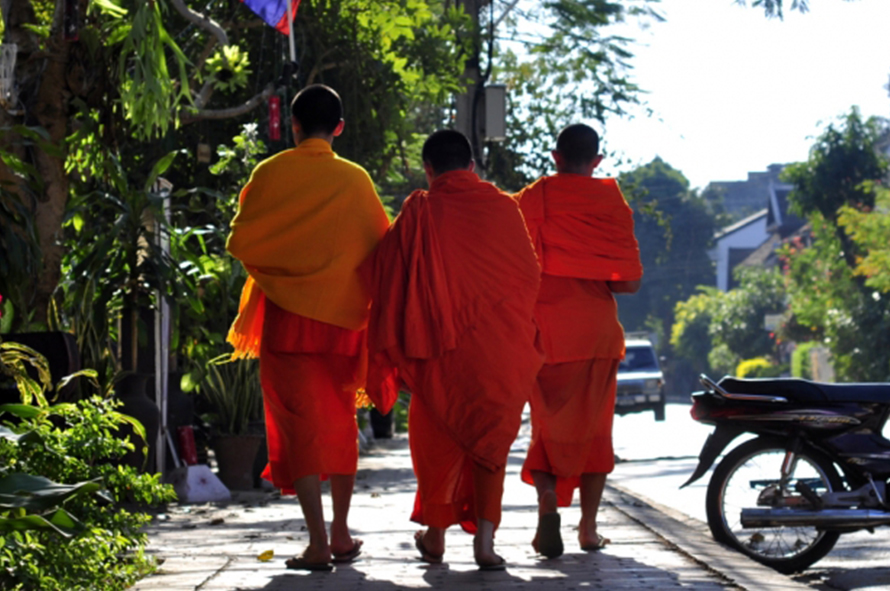
A group of saffron-robed monks walking along Luang Prabang’s charming streets.
Image copyright: gettingnowhere.net
Rise early before the sun to see sai bat, the morning alms, where hundreds of monks stream out of the
temples to collect alms from the faithful kneeling in the road. Keep a respectful distance before following
on to the temples. Wat Xieng Thong is particularly beautiful at this time, when the early
sun glimmers on
its exquisite glass mosaic tree, etched gold ceiling and reclining Buddha. Built in 1560, this is one of the
town’s most spiritual places. Wat Mai is also unmissable with its ornate five-tiered roof
and intricate
gold-etched walls, columns and ceilings. Adjoining the popular night market and Royal Palace Museum, it
dates back to the early 19th century.
If sunrise is not your time, climb the 300 well-worn stone steps up to Luang Prabang’s most revered temple,
Wat That Chomsi, which sits atop Mount Phousi. The views over the
town and river are
best enjoyed with a magnificent mountain sunset. Descend the other side towards the river and stop for a
chat with one of the resident novice monks; they love to practise their English.
If it’s your own interpretation of kamma you seek, discover your inner spirituality with Meditation,
a
permanent photography exhibition at Wat Khili – part of a 23-year project by photographer
Hans Georg Berger
that showcases how intrinsical meditation is to the monks through a series of black-and-white images of them
meditating in the forest around Luang Prabang. Set in this ancient temple at the heart of the peninsula, and
recently restored by the Buddhist Heritage Project, Wat Khili includes a 200-year-old manuscript library, a
wonderful insight into Lao Buddhist history for those who speak and read the native tongue, and with some
translated to English, it is also a fascinating historical archive for visitors to view.
Weaving the fabric of Laos
A young woman passes a spool of red silk thread expertly under two dozen others and pulls the wooden reed
forward with a clack, completing a single line of her journey. A rough pattern hangs at the top of the loom
though she doesn’t need to check it. She is a Master Weaver at the Fair Trade social enterprise Ock
Pop Tok
and she’s creating an intricate King Naga wall hanging, which retails at more than US$1,200.
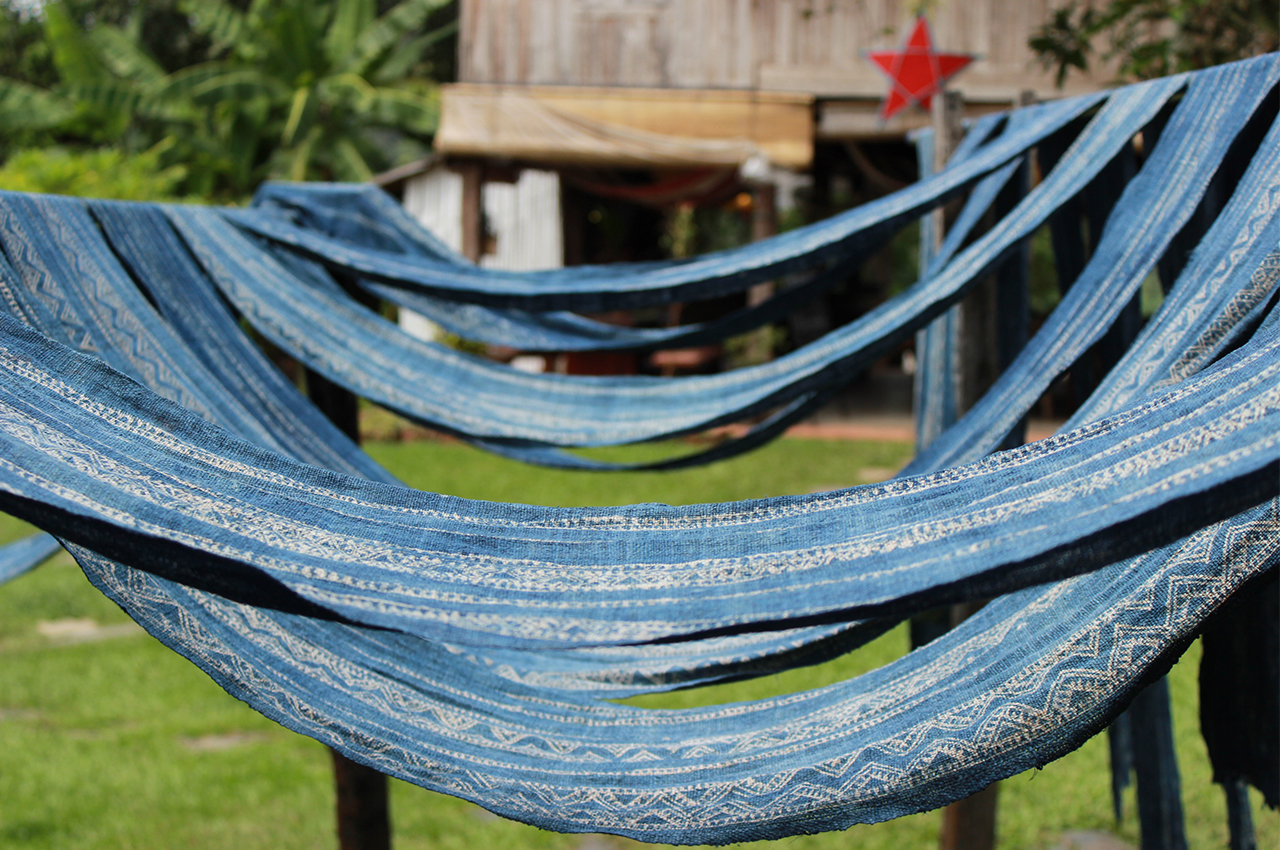
Drying the silk. Image copyright: Ock Pop Tok
“Lao silk weaving is a tradition that has passed from mother to daughter for centuries.”
“Lao silk weaving is a tradition that has passed from mother to daughter for centuries.”

Drying the silk.
Image copyright: Ock Pop Tok
Lao silk weaving is a tradition that has passed from mother to daughter for centuries. It begins with the
tiny yet voracious silkworm, whose cocoon can produce a single filament 300 metres long. Villages breed
silkworms, then gather several kilo bundles together for dyeing, using natural pigments from trees, flowers,
herbs or soils. They are then woven together on traditional wooden looms in intricate designs, each a unique
story of history, ethnicity and beliefs that differ between weavers and villages.
Each piece takes weeks or even months of painstaking work. Traditionally, weaving was used to create village
homewares, clothes and for dowries, with the most famed and intricate silk weaving practised by the Katu and
Tai ethnic groups. Today, exquisite silk embroideries are most commonly used to decorate hems of the
national daily dress, the sinh.
Ock Pop Tok works with hundreds of artisans around Luang Prabang and across the country, helping to sustain
and share the beauty of Lao history and culture through textiles. At its beautiful Living Crafts Centre,
sloped gardens are planted with haen, tamarind, lemongrass and other plants used in the natural silk dyeing
process. Wooden, thatched-roof, open-wall buildings pop up like mushrooms, angled to catch the breeze from
the ever-present Mekong River. The largest is home to the soft clatter of traditional wooden standing looms
and the whirl of fans overhead as 20-odd weavers expertly manipulate a throng of multicoloured threads to
create complex silk artworks. Further along, in the workshop room, master weavers accompany amateur
enthusiasts to create their own silk scarves.
On the other side of town, another Fair Trade organisation, Ma Té Sai, works primarily with
hand-spun
cotton. Ma Té Sai, which means “Where is it from?,” is a social and cultural enterprise retail store that
works directly with the weavers to design, produce and sell contemporary clothing, homewares and handicrafts
using traditional dyeing and weaving practices. For those who wish to delve even deeper into the finer
points of regional weaving craft, the Traditional Arts and Ethnology Centre in town allows
visitors to
explore Laos’ weaving practices and see examples of rare ethnic textiles.
Enduring architecture
Sipping a fresh lemon juice in the cool, tiled front room of a 150-year-old former royal mansion, it’s easy
to feel the French colonial influence that still endures in Luang Prabang. The heavy teak and rosewood
furniture, rotating wooden fans and patterned tiled floors are a familiar example of the carefully
preserved, UNESCO heritage-listed town.
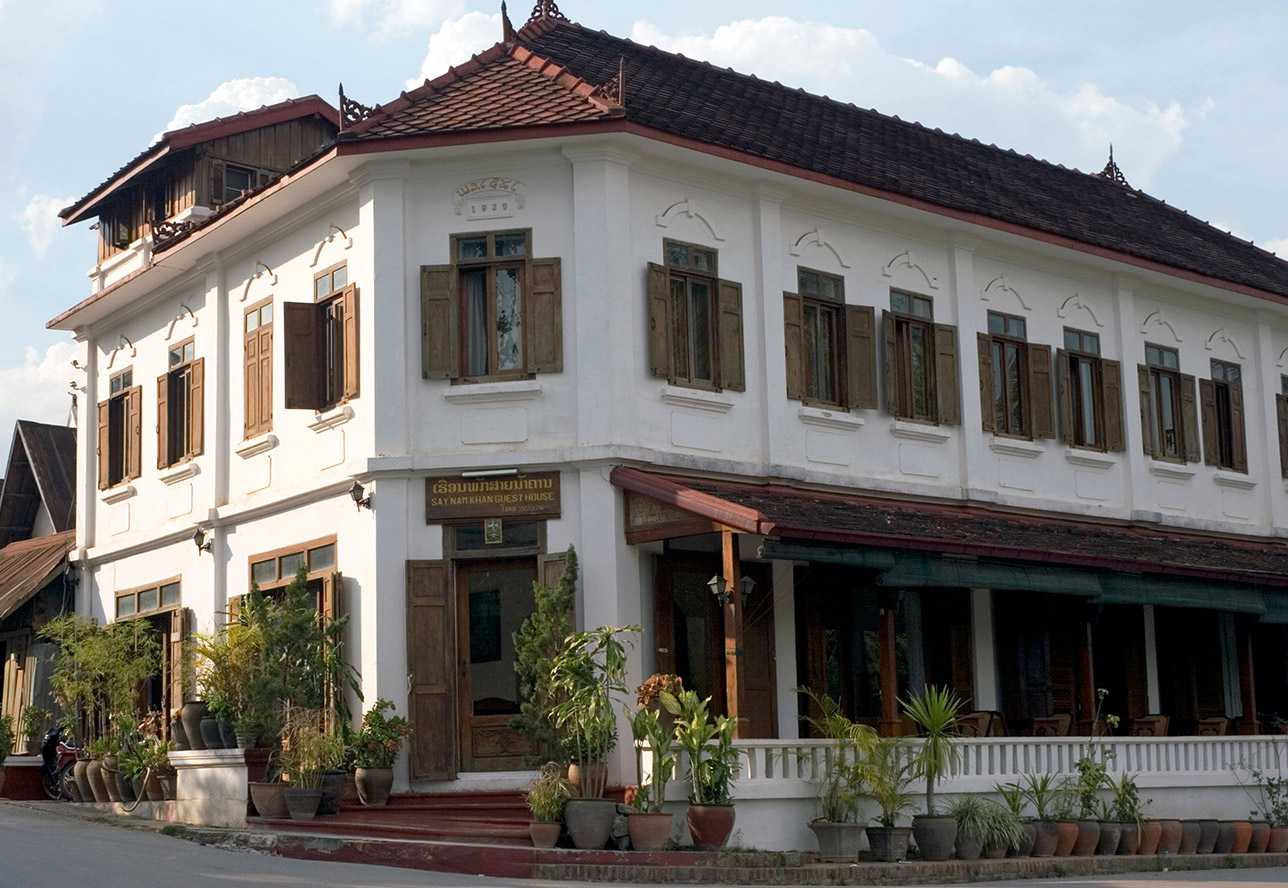
A French colonial building along a Luang Prabang street.
Formerly known as Muang Sua, the mountainous Luang Prabang has a 1,500-year history, including 700 years
under the Khmer empire as the capital of the Lao region. In the 14th century, Luang Prabang was a loose
collection of wooden houses centred around gold-roofed temples and connected by tiny, winding pathways and
ponds. Look closely and you’ll see this ancient urban plan still exists today, alongside grandiose French
Indochine designs of the 19th and 20th centuries. The Villa Xieng Muan is a wonderful example of traditional
Lao architecture, lifestyle and ethnic history. It’s right next door to the Heuan Chan Heritage
Museum,
dedicated to the preservation of Lao heritage buildings in Luang Prabang.
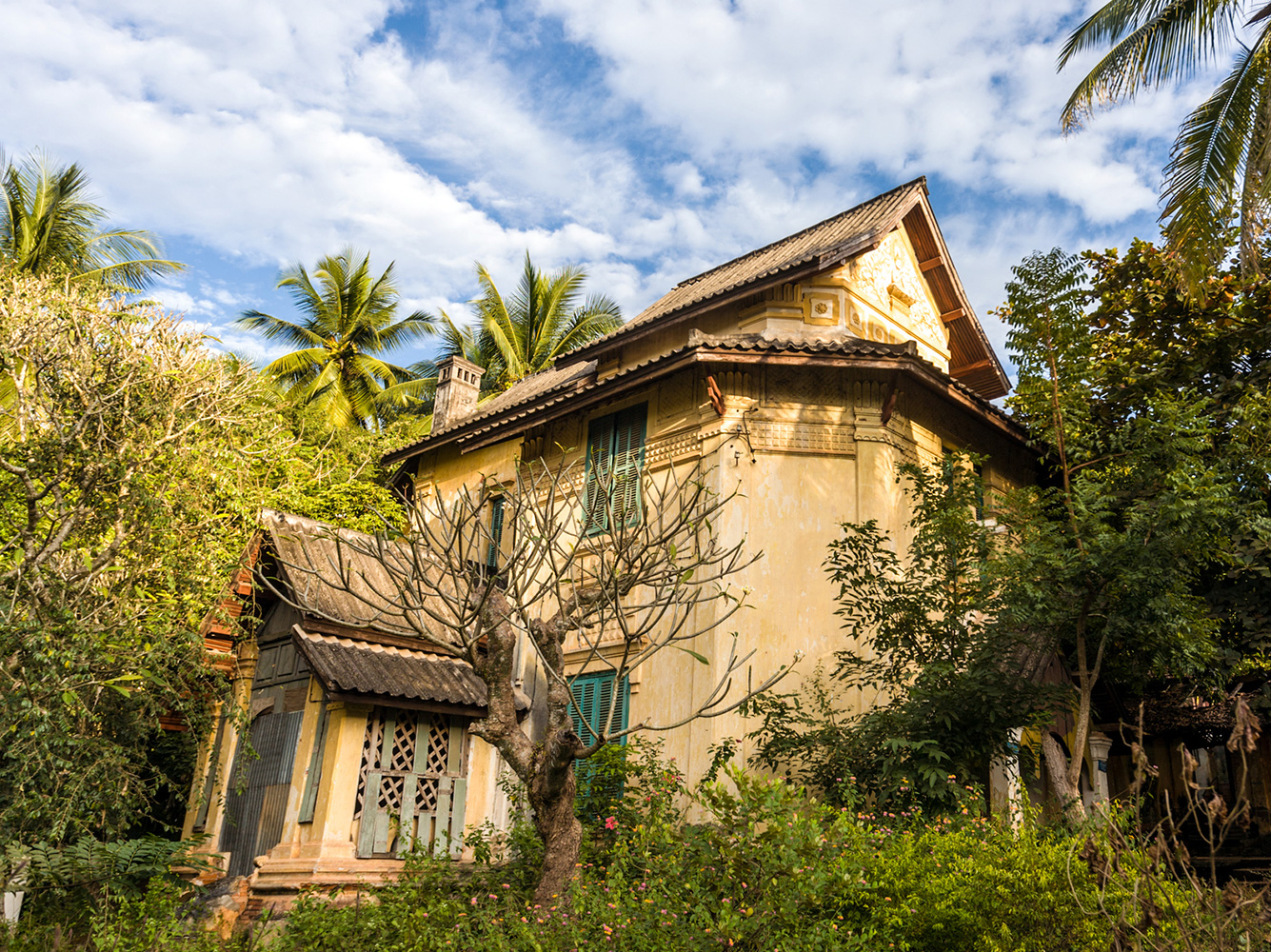
A French colonial villa in Luang Prabang.
In the late 1800s, French colonial powers and the Lao aristocracy of Vientiane developed a new architectural
fusion in Luang Prabang, inspired by local temples and materials, and French and Indochine architecture. The
French brought in skilled Vietnamese builders to build two-storey villas throughout the town. Previously,
bricks were only used for temples; the French introduced their use in their own buildings.
Thus, Luang Prabang consists of wide tree-shaded avenues lined with beautifully preserved 19th-century
villas of brick, wood and stucco complete with high ceilings, wide wooden balconies and shuttered louvres,
still in use today. So too are the brick and wood homes of the Vietnamese workers themselves, built closer
to the peninsula. Interspersed are the ubiquitous golden temples, glinting in the mountain sun. Some of the
oldest examples of French colonial architecture include the grand and sprawling Institut
Français, and for a
particularly striking Lao-French architectural fusion, the Royal Palace Museum, built for
King Sisavang Vong
in 1904. For an insight into Luang Prabang’s architectural history and UNESCO heritage status, visit the
Heritage House Information Centre downtown.
Rosewood Luang Prabang opens 2017 as Rosewood's first luxury tented villa resort.



